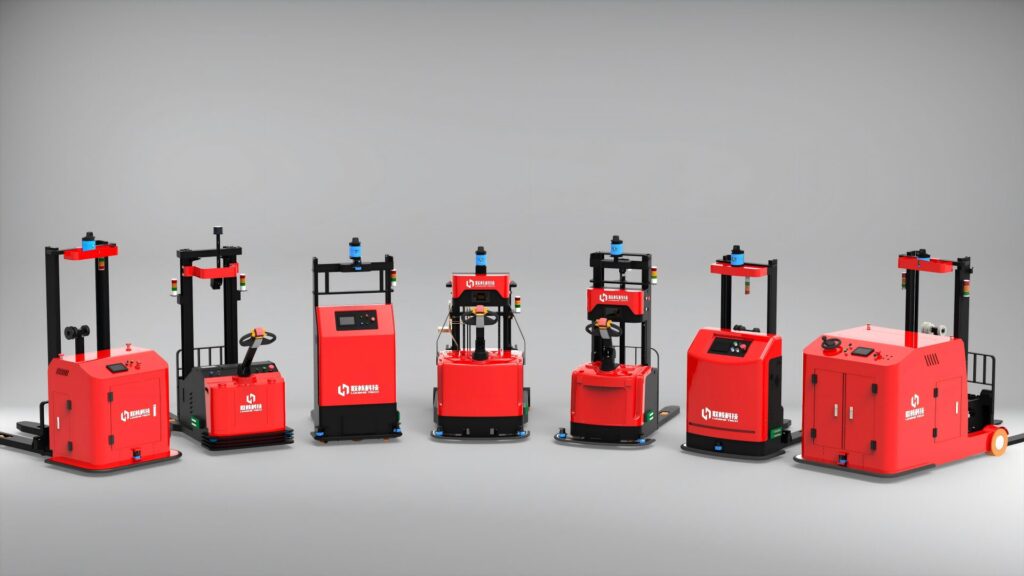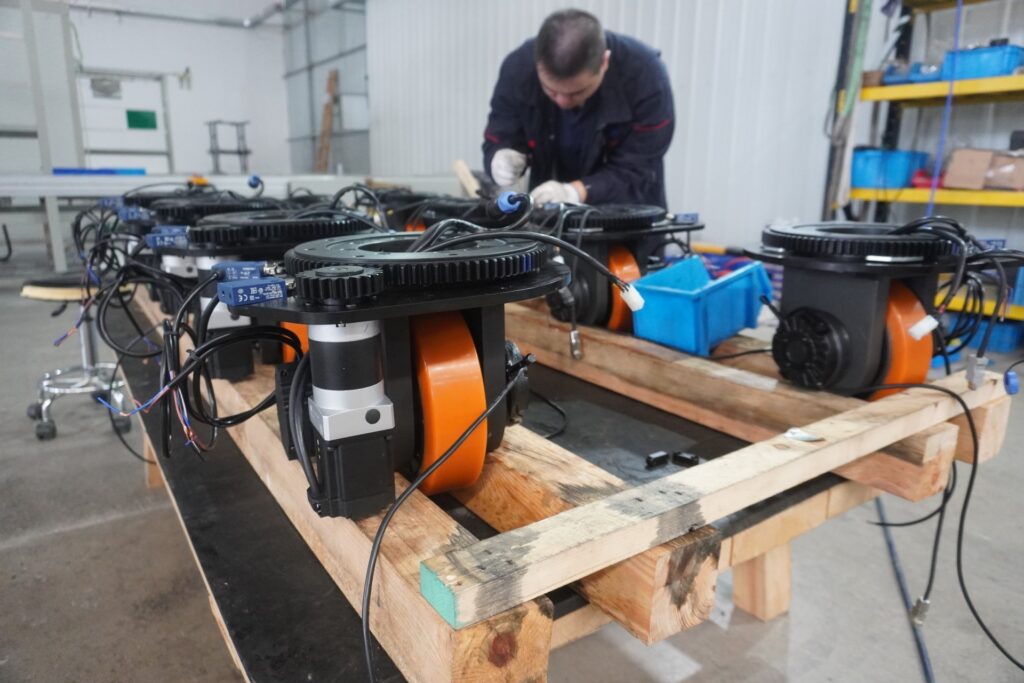- By YIKONG
- 2025-03-10 13:33:36
- TECHNICAL
How to choose the right rudder wheel for a forklift!
The forklift rudder wheel is an important part of the forklift, which not only provides power output, but also bears the weight and driving stability of the entire vehicle. Correctly choosing the right steering wheel type and configuration can not only improve the working efficiency of the forklift, but also extend the service life of the equipment. This article will introduce in detail the functions, types and selection points of forklift drive wheels, and combine the application scenarios of vertical rudders and horizontal rudders to provide practical reference for forklift selection.

1. The core function of forklift drive wheels
Power output: The driving wheels generate traction through ground friction to ensure that the forklift can efficiently achieve forward, backward, steering and braking operations.
Support stability: The drive wheels bear the entire weight of the forklift to ensure the stable operation of the vehicle under load, especially in complex or heavy-load environments.
2. Classification of forklift drive wheels
According to different driving methods, forklift drive wheels can be divided into the following three types:
Front-wheel drive
Front-wheel drive is suitable for flat ground and indoor environments, with the advantages of small turning radius and flexible handling, and is especially suitable for operations in narrow spaces, such as warehousing logistics forklifts.
Rear-wheel drive
Rear-wheel drive has stronger traction, suitable for complex terrain, can provide better stability, and is mainly used in outdoor or uneven working environments.
All-wheel drive
All-wheel drive has the strongest traction and stability, and can operate efficiently in harsh environments. It is suitable for heavy-duty forklifts and complex operation scenarios, such as port terminals, construction sites, etc.
3. Application of vertical rudder wheel and horizontal rudder wheel
As the expansion application of vertical rudder wheels and horizontal rudder wheels provide forklifts with more efficient driving and steering performance, especially in special scenarios.
Vertical rudder wheel
The vertical steering wheel structure is suitable for vertical stress, has excellent shock absorption and steering performance, is compact in structure and is easy to integrate into the forklift steering system. Vertical steering wheels are stable in high loads or frequent steering operations, and are especially suitable for forklifts that require high precision steering and stability, such as indoor automated forklifts (AGVs).
Horizontal rudder wheel
The horizontal steering wheel structure is more suitable for power output parallel to the ground, with strong load-bearing capacity and good stability. The horizontal rudder wheel performs well in environments where front and rear walking needs are high and the steering is relatively simple, and is suitable for indoor and outdoor forklifts with medium and heavy loads.
4. How to choose the suitable forklift drive wheel
When selecting forklift drive wheels, the following factors need to be considered comprehensively:
Working environment
Front-wheel drive or vertical rudder wheel is recommended for indoor environments to meet efficient and flexible operation needs; rear-wheel drive or horizontal rudder wheel is recommended for outdoor environments to provide stronger traction and stability; for harsh working conditions, all-wheel drive is the best choice to ensure stable operation.
Load requirements
Light-load forklifts can be equipped with front-wheel drive and small-size drive wheels, focusing on flexibility; heavy-load forklifts are recommended for all-wheel drive, large-size drive wheels or high-load horizontal steer wheels to meet the power output needs under high loads.
Frequency of use
For forklifts that are used frequently, it is recommended to choose more durable drive wheels to ensure long-term stable operation and reduce maintenance costs; for special needs such as automated forklifts, vertical steering wheels can be configured to improve precise steering and efficient handling performance.
5. Summary
Forklift drive wheels are the core component of the forklift, choosing the right drive wheel type is crucial. When selecting a model, it is necessary to consider comprehensively based on factors such as working environment, load requirements, and usage frequency. At the same time, the characteristics of vertical rudders and horizontal rudders are combined to meet the driving and support needs of forklifts in different scenarios. Reasonable selection of drive wheels can not only improve the working efficiency and safety of the forklift, but also extend the service life of the equipment and reduce operating costs.





